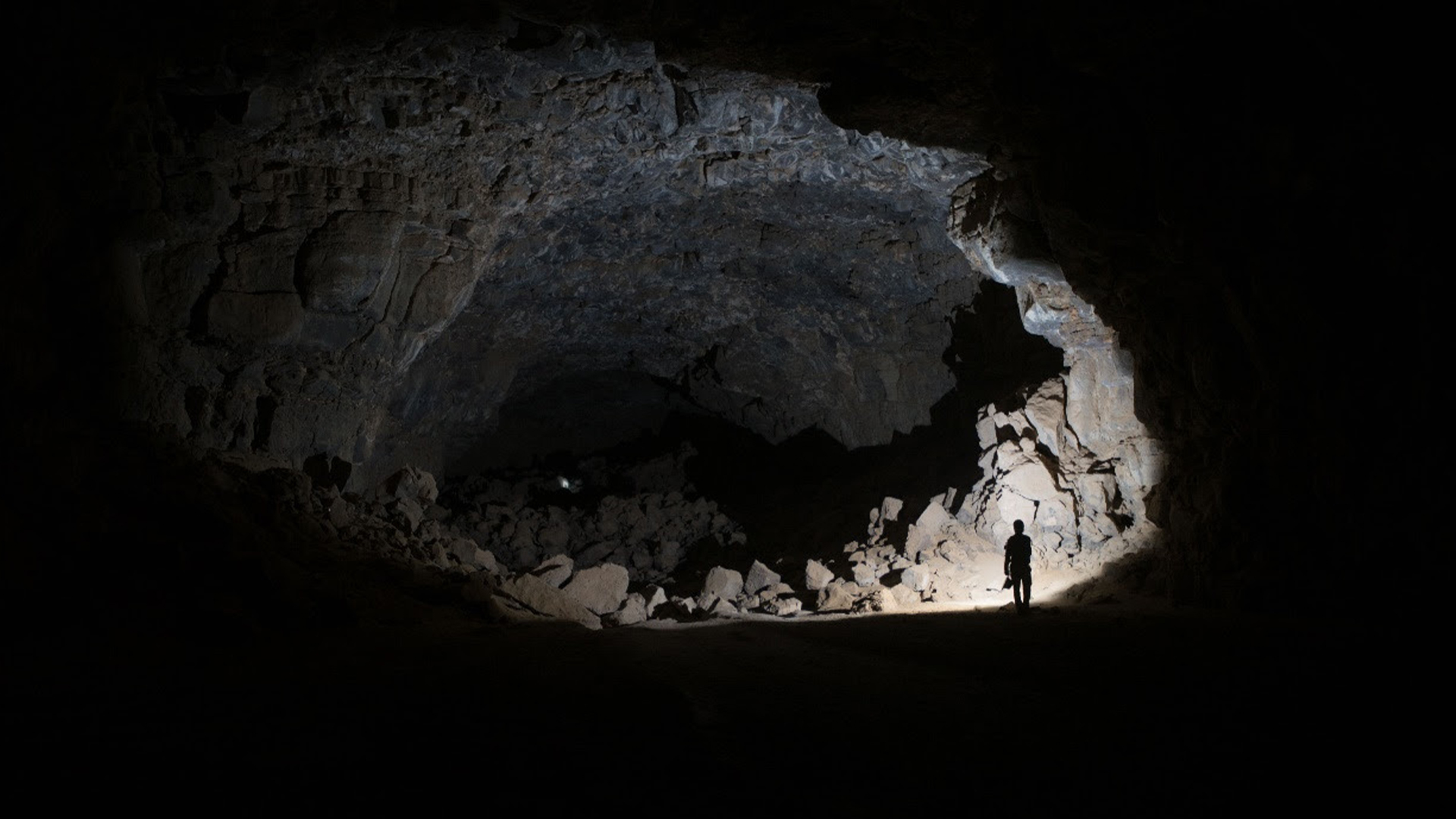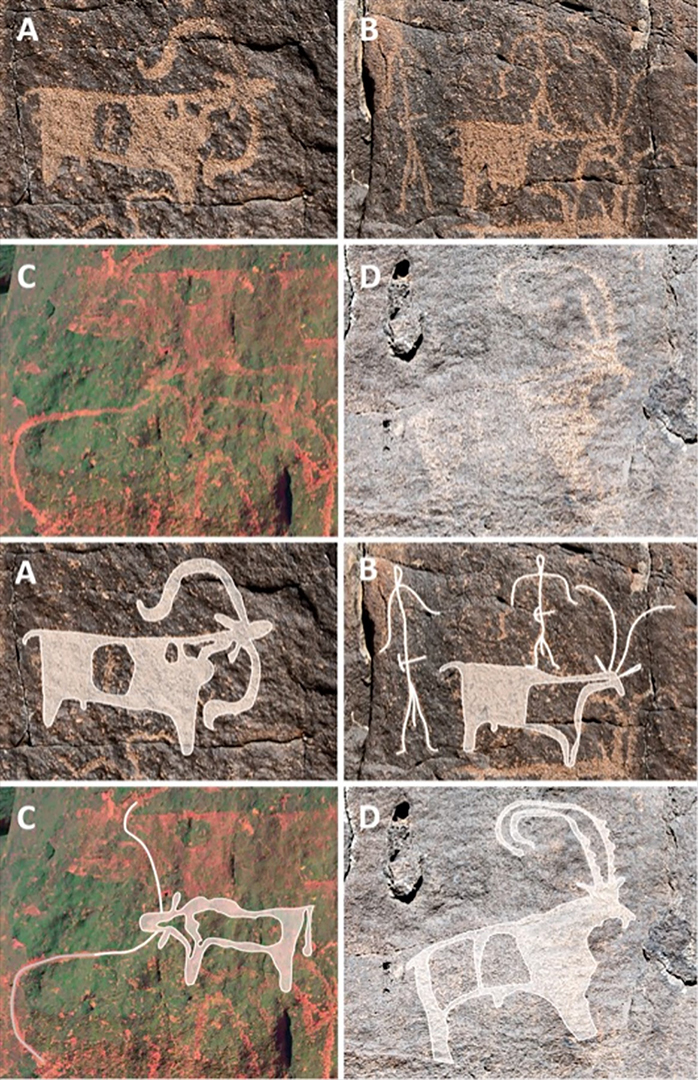Humans were living in a lava tube 7,000 years ago on the Arabian Peninsula
An analysis of a lava tube in Saudi Arabia reveals that humans have lived there for at least 7,000 years.

Archaeologists in Saudi Arabia have discovered that humans were living in a lava tube at least 7,000 years ago and possibly earlier, a new study finds.
The lava tube, called Umm Jirsan, is located in a volcanic field called Harrat Khaybar, approximately 78 miles (125 kilometers) north of Medina, researchers said in a statement.
"Umm Jirsan is currently the longest reported lava tube in Arabia in terms of the horizontal length of passages, at 1481 metres [4,859 feet]," the scientists wrote in the paper published Wednesday (April 17) in the journal PLOS One.
Although ancient humans are known to have lived on the Arabian Peninsula during prehistoric times, organic remains are scant due to poor preservation in the arid region. So the researchers looked for areas that would have preserved artifacts because they were sheltered from the sun, wind and wild temperature changes over the past millennia. Umm Jirsan met these criteria, so the team decided to look there.
Their hunch turned out to be good. They found artifacts such as fragments of cloth and worked wood; rock art of domesticated animals; and the skeletal remains of nine human bones. These finds suggest that people occupied the lava tuba for at least the past 7,000 years and possibly as far back as 10,000 years, according to radiocarbon dating and optically stimulated luminescence dating, which examines when the last time certain minerals were exposed to heat or sunlight. Some of the dates are relatively recent and the tube appears to have been used into modern times, Stewart said.
The humans who used the lava tube left a few clues about their lives. These include bones of domesticated sheep and goats, as well as rock art depicting these animals, suggesting that these creatures were key to the humans' survival. A chemical analysis of the human remains showed an increase in certain plants, like cereals and fruits, over time — possibly because of a rise in oasis agriculture in the Bronze Age, the team said in the statement.
The analysis suggested that humans weren't living in the lava tube for long periods at a time, however. "The lava tube does not appear to have served as a permanent habitation location, but rather as a site that likely lay on herding routes and that allowed access to shade and water for passing herders and their animals," the authors wrote in the study. "Prior to this, as well as during pastoral periods, the lava tube was likely also linked with hunting activities, which probably remained a cornerstone of local economies into the Bronze Age."
Sign up for the Live Science daily newsletter now
Get the world’s most fascinating discoveries delivered straight to your inbox.
Lava tubes form when lava creates underground passages that can transport large quantities of molten rock; when the lava supply ends or if the lava is diverted elsewhere, the empty tube is left behind, according to the National Park Service. And while they may sound inhospitable, they can be a good source of shelter. For instance, scientists at JAXA, Japan's space agency, have suggested that future humans could live in lava tubes on the moon.
Study co-author Mathew Stewart, a research fellow at the Australian Research Centre for Human Evolution at Griffith University in Australia, said lava tubes like this one continue to be used by modern-day people in the region "whether it be for corralling animals, accessing water resources, or simply for leisure," Stewart told Live Science in an email.
Related: 4,000-year-old wall found around oasis in Saudi Arabia likely defended 'against raids from nomads'

It's difficult to say when Umm Jirsan was last filled with lava, Stewart said, although volcanic activity has occurred intermittently in the region. "There have been some 1500 volcanic eruptions in Arabia over the past 1500 years, and many more in antiquity," Stewart said.
Scholars not involved with the research spoke positively of the team's work. It is "wonderful work by this team that has made a strong reputation for excellent fieldwork and interpretation," Gary Rollefson, a professor emeritus of anthropology at Whitman College and San Diego State University, told Live Science in an email. "Although the excavation produced relatively little in the way of artifacts and faunal remains, the material nevertheless reveals strong connections of material recovered in other parts of northern Saudi Arabia," Rollefson said, noting that there are similarities with material excavated in parts of Jordan.
Anthony Sinclair, a professor of archaeological theory and method at the University of Liverpool in the U.K., said in an email that in addition to providing shelter, the lava tube also would have been a "defendable position — in terms of allowing the pastoralists to safeguard their flocks at night against local predators. There would have been wolves, hyena and quite possibly lion and leopard across Arabia." Today, some of these animals are endangered or no longer present in Arabia.

Owen Jarus is a regular contributor to Live Science who writes about archaeology and humans' past. He has also written for The Independent (UK), The Canadian Press (CP) and The Associated Press (AP), among others. Owen has a bachelor of arts degree from the University of Toronto and a journalism degree from Ryerson University.










